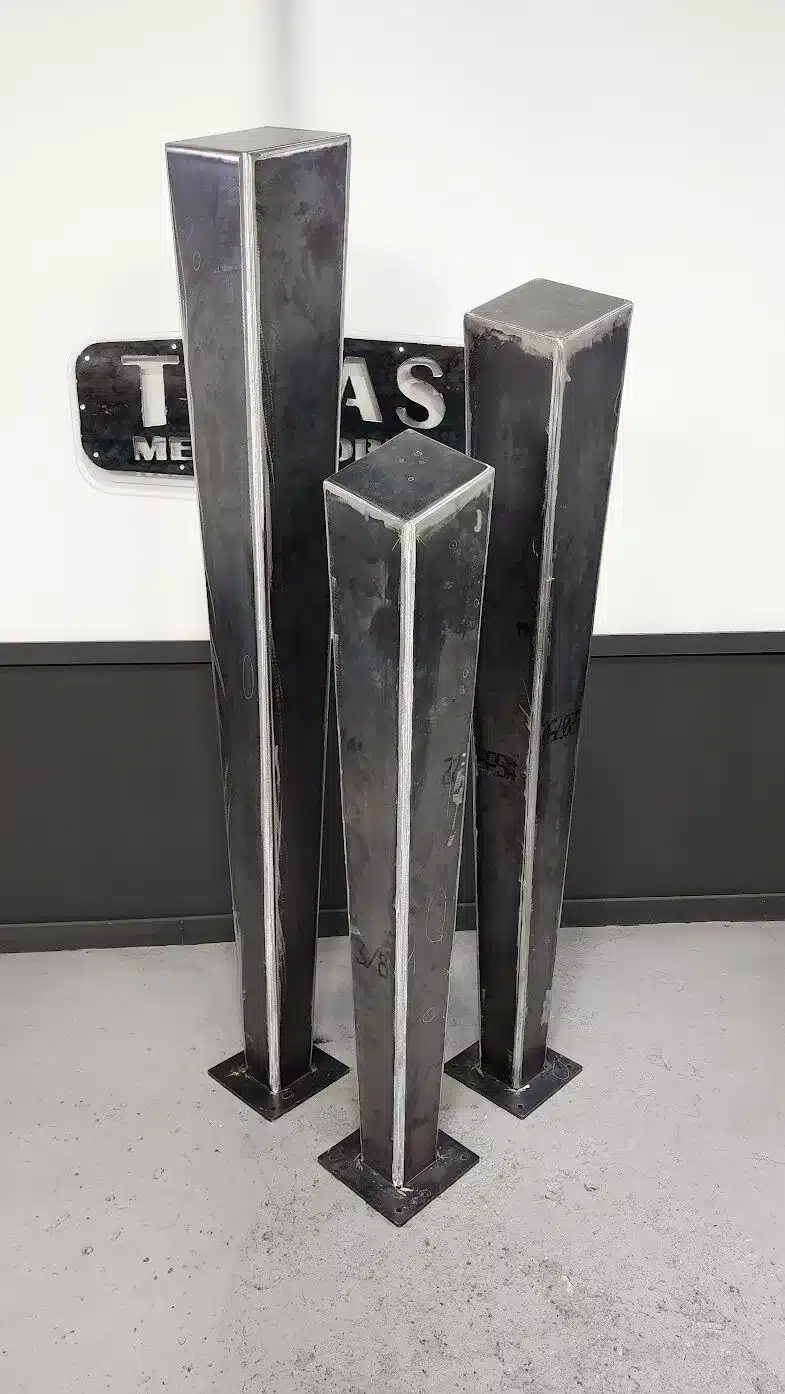I wanted to share the design concept behind our KRISAL monolithic sculptures, and maybe answer a few questions preemptively for those who may be interested in this project.
First, generally for anyone who sees enough of my artistic designs, you’ll notice a few things:
- I’m a HUGE fan of contemporary art and modernism. I mean, I appreciate all art. But if it’s something created in the last few decades and most people would find it “different”, I would probably love it.
- I’m extremely into minimalism. There is obvious raw talent when someone can draw, paint, or sculpt using realism. But, there is a different type of creativity involved in trying to remove as much of something as possible and still allow it to be recognizable.
- I like art to have unexpected lines. If something can be straight, I’d prefer it slanted. If a shape appears symmetrical, I’d rather push it out of proportion.
Having said all that, at Texas Metal Works we have hired several welders who are recent graduates from the local college welding program, and a while back I wanted to have a little contest for the team to determine who would win the crown as the Top Welder! There were prizes and everything… And I designed the KRISAL sculptures as the subject of the contest. Each welder was given a set of components, and then asked to complete it on their own and without any assistance. Afterwards, they were submitted to me for judging (I didn’t know who fabricated which sculpture), and I picked the champion.
On one hand, these sculptures are easy enough for a beginner welder! After all, there are only 6 pieces. On the other hand, the skill and craftsmanship of the fabricator is quite evident to the trained eye because there’s quite a bit of continuous seam welding, and then finishing, involved in the build.
Fixturing is also challenging, because as I previously stated, I don’t like things “normal”. So the sculpture design starts small at the bottom and swells outward at the top – capped by an angled plate (because why would we make it flat?!?). For this reason, what seems like it would be simple to assemble is actually pretty difficult to put together perfectly.
The challenge continues after the fixturing, because there are more than 20 feet of linear seam welds, and the quality of the welds remain evident even after they’re ground smooth. Porosity, uneven travel speeds, surface contamination, and other factors can leave telltale signs to the trained eye. And they can become hyper-visible once painted or powder coated, especially with glossy colors.
A lot of welders rush through the seam welding and figure they can fix any minor defects by simply grinding. But grinding and finishing take a lot of practice as well! And if you have to be very aggressive in one area to remove a blemish, it will absolutely show in the finished product.
For all this talk of perfection, the great thing about these sculptures is that the average person will simply gaze in wonder at the beauty of the finished piece! They aren’t going to be inspecting the welding and grinding – just admiring the art. So even if you’re a beginner you can take on this project. But for those who are advanced, KRISAL offers an opportunity to show off how close you can get to perfection!
John P.
Texas Metal Works
Founder
- You must be logged in to reply to this topic.

